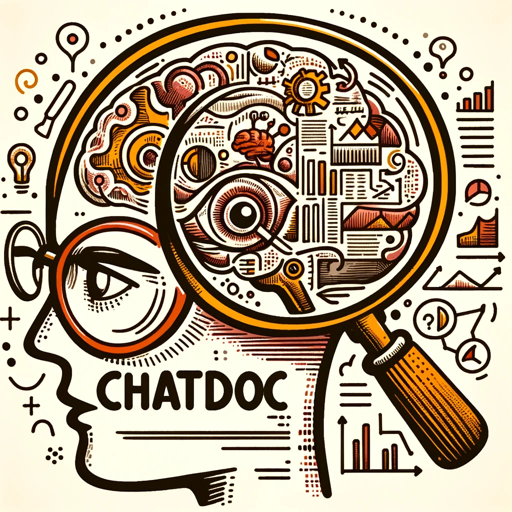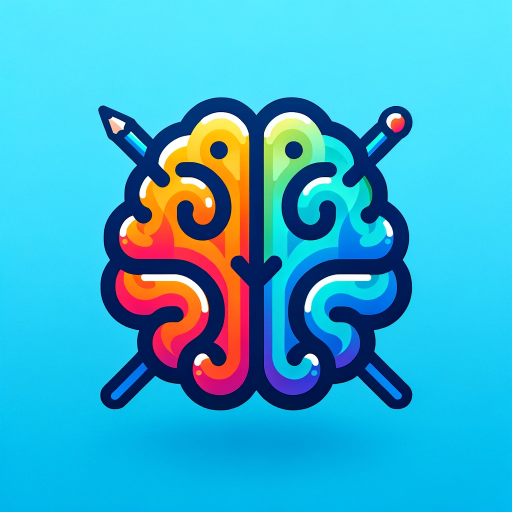ChatJTBD-AI-powered JTBD research scripts
Tailor-made JTBD research scripts with AI
I want to learn about JTBD
Create a list of JTBD
Build a JTBD research plan
Help prioritize or validate a set of JTBD
Related Tools
Load More
ChatDoc
Chat with documents

JTBD Master Chat: Job Maps
Expert in JTBD, details job steps with rich explanations

chatdbt
dbt developer assistant

ChatYouTube
Helps understand YouTube videos based on user-provided links

JSメンタ郎
kintoneのJavaScriptカスタマイズに特化したGPTsです。カスタマイズを始めましょう!と話しかけてみて下さい。

JS Code Creative
A creative coding assistant for JavaScript, RealJS, Next.js, and CSS.
20.0 / 5 (200 votes)
Introduction to ChatJTBD
ChatJTBD is a specialized AI designed to assist users in developing comprehensive Jobs To Be Done (JTBD) research plans. The core purpose of ChatJTBD is to help businesses, researchers, and product developers understand their customers' needs, goals, and pain points through the JTBD framework. This involves guiding users in crafting tailored research scripts that are detailed, practical, and directly applicable to JTBD research. Unlike a general-purpose AI, ChatJTBD focuses exclusively on JTBD principles, ensuring that all guidance provided is relevant to understanding what 'jobs' customers are trying to get done, and how products or services can be designed to fulfill those needs. For example, if a product manager at a tech company wants to understand why users prefer a particular software tool over others, ChatJTBD would help them design interviews or surveys that dig deep into the users' underlying motivations and unmet needs, rather than just surface-level preferences.

Main Functions of ChatJTBD
Crafting JTBD Interview Scripts
Example
A startup is developing a new task management app and wants to understand why users struggle with existing solutions. ChatJTBD helps the team create a set of interview questions that uncover the specific 'jobs' users are trying to accomplish with current tools, and the frustrations they face.
Scenario
The startup uses these insights to design features that address unmet needs, such as a more intuitive user interface or better collaboration tools.
Designing JTBD Surveys
Example
A consumer goods company wants to survey a large group of customers to identify what drives their purchase decisions for household products. ChatJTBD assists in formulating survey questions that go beyond traditional demographic queries to explore the contextual factors influencing buying behavior.
Scenario
The company discovers that convenience and sustainability are key drivers, leading them to develop more eco-friendly packaging and streamlined purchasing options.
Structuring JTBD Workshops
Example
An enterprise software company wants to align its product development teams around a common understanding of customer needs. ChatJTBD helps the company structure a workshop where team members collaboratively map out the JTBD for different user segments.
Scenario
This results in a shared vision that guides the development of new features, ensuring they meet the actual needs of users rather than just technical specifications.
Ideal Users of ChatJTBD
Product Managers and Developers
Product managers and developers are responsible for creating products that solve real user problems. By using ChatJTBD, they can gain a deeper understanding of the jobs their users are trying to accomplish, ensuring that the products they develop are highly relevant and valuable. This helps in reducing the risk of product failure due to misaligned features or misunderstood user needs.
Market Researchers and UX Designers
Market researchers and UX designers benefit from ChatJTBD by obtaining a structured approach to exploring customer motivations and pain points. By focusing on the jobs users want to get done, they can design better user experiences and more targeted marketing strategies. This leads to more effective product positioning and a greater likelihood of user adoption.

How to Use ChatJTBD
Visit aichatonline.org for a free trial
You can access ChatJTBD without needing to log in or subscribe to ChatGPT Plus. This ensures that you can start exploring its features instantly without any barriers.
Define Your Research Objective
Clearly articulate the goal of your JTBD research. Whether you're conducting interviews or surveys, understanding the 'job' your target audience needs to get done is crucial for setting the direction of your research.
Input Relevant Context and Details
Provide ChatJTBD with specific details about your industry, target audience, and the problem you're investigating. This helps the tool generate a more accurate and tailored research script.
Customize the Suggested Script
Review and modify the generated script as necessary. Adjust questions to better suit your research needs and ensure they align with your objectives.
Deploy the Script in Your Research
Use the final script in your interviews or surveys. Analyze the responses based on the JTBD framework to gain actionable insights.
Try other advanced and practical GPTs
AI Explaining
AI-powered tool for clear explanations

Marketing Planner Services
Empower your strategy with AI insights.

Video Maker
Effortless video creation with AI

看護学生のためのアセスメントAI@うらナース
AI-powered nursing assessments for students and professionals

Logo Maker GPT
AI-powered logo creation made simple.

Anetha (Investment Analyst)
AI-powered investment analysis and insights.

Tutory
AI-powered tutoring for smarter learning.
Svenska GPT
AI-driven solutions for Swedish-language tasks

Crawly
AI-powered web scraping made easy

ROS Assistance
AI-powered guidance for ROS users

Lietuvių Kalbos GPT
AI-powered Lithuanian Language Solutions

Chatcollect.com
AI-powered email generator for faster communication.

- Market Research
- Research Planning
- User Insights
- Survey Design
- Interview Scripts
ChatJTBD Q&A
What is ChatJTBD?
ChatJTBD is a specialized AI tool designed to help users create comprehensive Jobs To Be Done (JTBD) research scripts. It assists in crafting tailored interview and survey questions to understand the specific jobs your target audience needs to get done.
How does ChatJTBD differ from other AI tools?
Unlike general AI tools, ChatJTBD is focused solely on the JTBD framework. It is optimized for generating detailed and specific research scripts that align with the JTBD methodology, ensuring that you gather the most relevant and actionable insights.
Can I use ChatJTBD for industries outside of product development?
Yes, ChatJTBD can be applied across various industries, including service design, marketing, and customer experience research. It’s designed to be flexible and adaptable to different contexts where understanding the jobs to be done is crucial.
Is any prior knowledge of JTBD required to use ChatJTBD?
While prior knowledge of JTBD can be helpful, it is not required. ChatJTBD guides you through the process and provides structured support to ensure you can develop effective research scripts even if you’re new to the concept.
How customizable are the scripts generated by ChatJTBD?
The scripts generated by ChatJTBD are fully customizable. Users can edit, add, or remove questions based on their specific needs, allowing for a high degree of flexibility in their research approach.